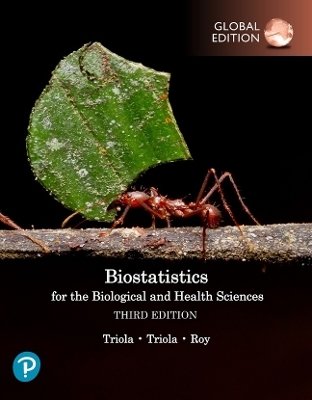
Social Statistics for a Diverse Society With SPSS Student Version
SAGE Publications Inc
978-1-4129-1793-3 (ISBN)
- Titel ist leider vergriffen;
keine Neuauflage - Artikel merken
Chava Frankfort-Nachmias is an Emeritus Professor of Sociology at the University of Wisconsin–Milwaukee. She is the coauthor of Research Methods in the Social Sciences (with David Nachmias), coeditor of Sappho in the Holy Land (with Erella Shadmi), and numerous publications on ethnicity and development, urban revitalization, science and gender, and women in Israel. She was the recipient of the University of Wisconsin System teaching improvement grant on integrating race, ethnicity, and gender into the social statistics and research methods curriculum. Anna Leon-Guerrero is Professor of Sociology at Pacific Lutheran University in Washington. She received her PhD in sociology from the University of California–Los Angeles. She was the recipient of the university’s Faculty Excellence Award and the K. T. Tang Award for Excellence. She is the author of and Social Problems: Community, Policy, and Social Action, 7th Edition, and co-author (with Chava Frankfort-Nachmias and Georgiann Davis) of Social Statistics for a Diverse Society, 10th Edition (both with Sage).
Chapter 1: The What and the Why of Statistics
Introduction
The Research Process
Asking Research Questions
The Role of Theory
Formulating the Hypotheses
Independent and Dependent Variables: Causality
Independent and Dependent Variables: Guidelines
Collecting Data
Levels of Measurement
Nominal Level of Measurement
Ordinal Level of Measurement
Interval-Ratio Level of Measurement
Cumulative Property of Levels of Measurement
Levels of Measurement of Dichotomous Variables
Discrete and Continuous Variables
Analyzing Data and Evaluating the Hypotheses
Descriptive and Inferential Statistics
Evaluating the Hypotheses
Looking at Social Differences
MAIN POINTS
KEY TERMS
SPSS Demonstration
SPSS Problem
Chapter Exercises
Chapter 2: Organization of Information: Frequency Distributions
Introduction
Frequency Distributions
Proportions and Percentages
Percentage Distributions
Comparisons
Statistics in Practice: Labor Force Participation of Latinos
The Construction of Frequency Distributions
Frequency Distributions for Nominal Variables Frequency Distributions for Ordinal
Variables Frequency Distributions for Interval-Ratio Variables
Cumulative Distributions
Reading the Research Literature: Statistical Tables
Basic Principles
Conclusion
MAIN POINTS
KEY TERMS
SPSS DEMONSTRATIONS
SPSS PROBLEMS
CHAPTER EXERCISES
Chapter 3: Graphic Presentation
Introduction
The Pie Chart: Race and Ethnicity of the Elderly
The Bar Graph: Living Arrangements and Labor Force Participation of the Elderly
The Statistical Map: The Geographic Distribution of the Elderly
The Histogram
Statistics in Practice: The “Graying” of America
The Frequency Polygon
Time Series Charts
Distortions in Graphs
Shrinking and Stretching the Axes: Visual Confusion Distortions with Picture Graphs
Statistics in Practice: Diversity at a Glance
MAIN POINTS
KEY TERMS
SPSS DEMONSTRATIONS
SPSS PROBLEMS
CHAPTER EXERCISES
Chapter 4: Measures of Central Tendency
Introduction
The Mode
The Median
Finding the Median in Sorted Data
Finding the Median in Frequency Distributions
Statistics in Practice: Changes in Age at First Marriage
Locating Percentiles in a Frequency Distribution
The Mean
Using a Formula to Calculate the Mean
Understanding Some Important Properties of the Arithmetic Mean
The Shape of the Distribution: Television and Education
The Symmetrical Distribution
The Positively Skewed Distribution
The Negatively Skewed Distribution
Guidelines for Identifying the Shape of a Distribution
Considerations for Choosing a Measure of Central Tendency
Level of Measurement
Skewed Distribution
Symmetrical Distribution
MAIN POINTS
KEY TERMS
SPSS DEMONSTRATIONS
SPSS PROBLEMS
CHAPTER EXERCISES
Chapter 5: Measures of Variability
Introduction
The Importance of Measuring Variability
The Index of Qualitative Variation (IQV): A Brief Introduction
Steps for Calculating the IQV
Statistics in Practice: Diversity in U.S. Society
The Range
The Interquartile Range: Increases in Elderly Populations
The Box Plot
The Variance and the Standard Deviation: Changes in the Elderly Population
Calculating the Deviation from the Mean
Calculating the Variance and the Standard Deviation
Considerations for Choosing a Measure of Variation
Reading the Research Literature: Gender Differences in Caregiving
MAIN POINTS
KEY TERMS
SPSS DEMONSTRATIONS
SPSS PROBLEMS
CHAPTER EXERCISES
Chapter 6: Relationships Between Two Variables: Cross-Tabulation
Introduction
Independent and Dependent Variables
How to Construct a Bivariate Table: Race and Home Ownership
How to Compute Percentages in a Bivariate Table
Calculating Percentages Within Each Category of the Independent Variable
Comparing the Percentages Across Different Categories of the Independent Variable
How to Deal with Ambiguous Relationships Between Variables
Reading the Research Literature: Medicaid Use Among the Elderly
The Properties of a Bivariate Relationship
The Existence of the Relationship
The Strength of the Relationship
The Direction of the Relationship
Elaboration
Testing for Nonspuriousness: Firefighters and Property Damage
An Intervening Relationship: Religion and Attitude Toward Abortion
Conditional Relationships: More on Abortion
The Limitations of Elaboration
Statistics in Practice: Family Support for the Transition from High School
MAIN POINTS
KEY TERMS
SPSS DEMONSTRATIONS
SPSS PROBLEMS
CHAPTER EXERCISES
Chapter 7: Measures of Association for Nominal and Ordinal Variables
Introduction
A Guide to Interpretation
Lambda: A Measure of Association for Nominal Variables
A Method for Calculating Lambda
Some Guidelines for Calculating Lambda
Gamma: An Ordinal Measure of Association
Analyzing the Association Between Ordinal Variables: Job Security and Job Satisfaction
Comparison of Pairs
Types of Pairs
Counting Pairs
Same Order Pairs (Ns)
Inverse Order Pairs (Nd)
Calculating Gamma
Positive and Negative Gamma
Gamma as a PRE Measure
Statistics in Practice: Trauma by Social Class
Using Ordinal Measures with Dichotomous Variables
Reading the Research Literature: Worldview and Abortion Beliefs
Examining the Data
Interpreting the Data
MAIN POINTS
KEY TERMS
SPSS DEMONSTRATION
SPSS problems
CHAPTER EXERCISES
Chapter 8: Regression and Correlation
Introduction
The Scatter Diagram
Linear Relations and Prediction Rules
Constructing Straight-Line Graphs
Finding the Best-Fitting Line
Computing a and b for the Prediction Equation
Interpreting a and b
Statistics in Practice: GNP and Willingness to Volunteer Time for Environmental Protection
Methods for Assessing the Accuracy of Predictions
Prediction Errors
Pearson’s Correlation Coefficient (r)
Statistics in Practice: Teen Pregnancy and Social Inequality
Statistics in Practice: The Marriage Penalty in Earnings
Multiple Regression
MAIN POINTS
KEY TERMS
SPSS DEMONSTRATIONS
SPSS PROBLEMS
CHAPTER EXERCISES
Chapter 9: Sampling
Introduction
Properties of the Normal Distribution
Empirical Distributions Approximating the Normal Distribution
An Example: Final Grades in Statistics
Areas Under the Normal Curve
Interpreting the Standard Deviation
Standard (Z) Scores
Transforming a Raw Score into a Z Score
Transforming a Z Score into a Raw Score
The Standard Normal Distribution
The Standard Normal Table
The Structure of the Standard Normal Table
Transforming Z Scores into Proportions (or Percentages)
Transforming Proportions (or Percentages) into Z Scores
Working with Percentiles
A Final Note
MAIN POINTS
KEY TERMS
SPSS DEMONSTRATION
SPSS PROBLEMS
CHAPTER EXERCISES
Chapter 10: Estimation
Introduction
Aims of Sampling
Some Basic Principles of Probability
Probability Sampling
The Simple Random Sample
The Systematic Random Sample
The Stratified Random Sample
The Concept of the Sampling Distribution
The Population
The Sample
The Dilemma
The Sampling Distribution
The Sampling Distribution of the Mean
An Illustration
Review
The Mean of the Sampling Distribution
The Standard Error of the Mean
The Central Limit Theorem
The Size of the Sample
The Significance of the Sampling Distribution and the Central Limit Theorem
MAIN POINTS
KEY TERMS
SPSS DEMONSTRATION
SPSS PROBLEM
CHAPTER EXERCISES
Chapter 11: Testing Hypotheses
Introduction
Estimation Defined
Reasons for Estimation
Point and Interval Estimation
Procedures for Estimating Confidence Intervals for Means
Determining the Confidence Interval
Reducing Risk
Estimating Sigma
Sample Size and Confidence Intervals
Statistics in Practice: Hispanic Migration and Earnings
Confidence Intervals for Proportions
Procedures for Estimating Proportions
Increasing the Sample Size
Statistics in Practice: Religiosity and Support for Stem-Cell Research
MAIN POINTS
KEY TERMS
SPSS DEMONSTRATION
SPSS PROBLEMS
CHAPTER EXERCISES
Chapter 12: Testing Hypotheses
Introduction
Assumptions of Statistical Hypothesis Testing
Stating the Research and Null Hypotheses
The Research Hypothesis (H1)
The Null Hypothesis (H0)
More About Research Hypotheses: One- and Two-Tailed Tests
Determining What Is Sufficiently Improbable: Probability Values and Alpha
The Five Steps in Hypothesis Testing: A Summary
Errors in Hypothesis Testing
The t Statistic and Estimating the Standard Error
The t Distribution and Degrees of Freedom
Comparing the t and Z Statistics
Statistics in Practice: The Earnings of White Women
Testing Hypotheses About Two Samples
The Assumption of Independent Samples
Stating the Research and Null Hypotheses
The Sampling Distribution of the Difference Between Means
Estimating the Standard Error
Calculating the Estimated Standard Error
The t Statistic
Calculating the Degrees of Freedom for a Difference Between Means Test
The Five Steps in Hypothesis Testing About Difference Between Means: A Summary
Statistics in Practice: The Earnings of Asian American Men
Testing the Significance of the Difference Between Two Sample Proportions
Statistics in Practice: Equalizing Income and Race
Statistics in Practice: Equalizing Income and Political Views
Reading the Research Literature: Reporting the Results of Statistical Hypothesis Testing
MAIN POINTS
Key Terms
SPSS DEMONSTRATIONS
SPSS PROBLEMS
CHAPTER EXERCISES
Chapter 13: The Chi-Square Test
Introduction
The Concept of Chi-Square as a Statistical Test
The Concept of Statistical Independence
The Structure of Hypothesis Testing with Chi-Square
The Assumptions
Stating the Research and the Null Hypotheses
The Concept of Expected Frequencies
Calculating the Expected Frequencies
Calculating the Obtained Chi-Square
The Sampling Distribution of Chi-Square
Determining the Degrees of Freedom
Review
The Limitations of the Chi-Square Test: Sample Size and Statistical Significance
Statistics in Practice: Social Class and Health
Reading the Research Literature: Sibling Cooperation and Academic Achievement
MAIN POINTS
KEY TERMS
SPSS DEMONSTRATION
SPSS PROBLEMS
CHAPTER EXERCISES
Chapter 14: Analysis of Variance
Introduction
Understanding Analysis of Variance
The structure of hypothesis testing with ANOVA
The five steps in hypothesis testing: A summary
Testing the Significance of r2 using ANOVA
ANOVA for Multiple Linear Regression
Reading the Research Literature: Self Image and Ethnic Identification
Reading the Research Literature: Effects of authority structures and gender on interaction in task groups
MAIN POINTS
KEY TERMS
SPSS DEMONSTRATION
SPSS PROBLEMS
CHAPTER EXERCISES
Index
End of Chapter answers, odd numbered questions
| Erscheint lt. Verlag | 21.9.2005 |
|---|---|
| Reihe/Serie | Undergraduate Research Methods and Statistics |
| Verlagsort | Thousand Oaks |
| Sprache | englisch |
| Maße | 187 x 231 mm |
| Gewicht | 1210 g |
| Themenwelt | Mathematik / Informatik ► Mathematik ► Statistik |
| Sozialwissenschaften ► Soziologie | |
| ISBN-10 | 1-4129-1793-X / 141291793X |
| ISBN-13 | 978-1-4129-1793-3 / 9781412917933 |
| Zustand | Neuware |
| Haben Sie eine Frage zum Produkt? |
aus dem Bereich

